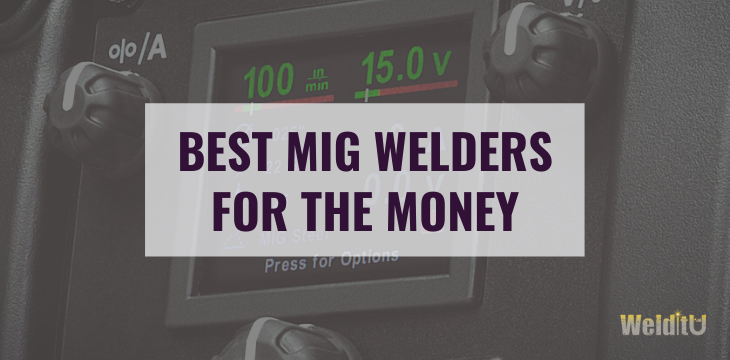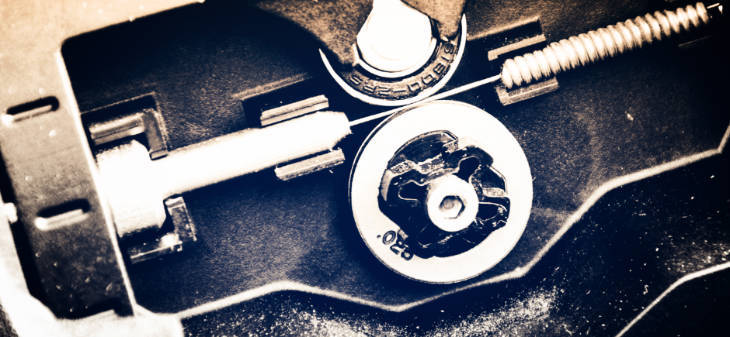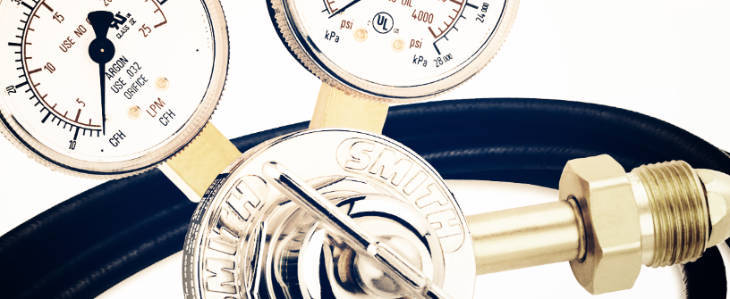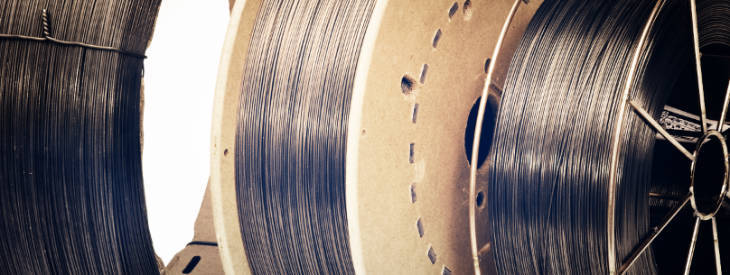Your Guide to the Best MIG Welders for Any Budget
Whether you’re a beginner or a more advanced enthusiast, this guide will help focus your buying choices on the best MIG welders for the money.
Discover and compare the best MIG welders broken down by price into budget categories of less than $300, $500, $1000, and $2000. And I’ll let you know which machine is the top overall value and why I think it’s the single best MIG welder for your money.
Separate buying guides for each price range help you get the most MIG welder for your budget. You’ll learn which options are worth the money because they’re nice to have, or can actually make you a better welder every time you pick up the torch.
Jump to:

Compare the Best MIG Welders Under $300




Buyer’s Guide: What to Expect With a MIG Welder Under $300
These are inexpensive, handy, beginner machines. Usually weighing under 40 pounds, they are portable and always ready to handle minor repairs and welding projects.
In less time than it takes to “MacGyver” a fix using screws, duct tape, or some miracle epoxy, you can make a permanent repair to a broken fence gate, lawn mower deck, or most any metal item around your home, farm, or business.
And when you’ve repaired something using your MIG welder, you know it will stay fixed. That’s because you can add reinforcement where it’s needed to make the item stronger than new.
Once you’ve caught up with all your maintenance work, it’s time to move on to making useful improvements and modifications to items around your home. You may even try your hand at creating decorative artwork from scrap or unusual metal pieces, or learn to build functional and attractive furniture.
For the home-use or hobby welder, completion of only one or two simple projects will easily offset the low cost of a basic MIG welder in this price range.
Convenient 120-Volt Power
Most welders in this group will operate from standard 120-volt (often referred to as 110v or 115-volt) household outlets with a 20-amp circuit breaker. For full output, a 30 amp circuit is necessary.
Pair up with a portable generator to make welded repairs anywhere. More about sizing a generator.
While the ability to run from 120-volt power is key to making a basic MIG welder portable and convenient to use, there are some limitations you’ll want to keep in mind.
See the best 110V MIG welders.
Low Duty Cycles
Because basic welders have a low 10-20% duty cycle, maintaining a reliable electrical circuit is essential. At higher heat settings, you have only one or two minutes to weld within 10 minutes before the heat causes the internal thermal overload to trip.
Any deficiencies in your electrical supply will further reduce your time. Once the overload trips, you’ll wait up to 15 minutes as the machine idles with the fan running to cool itself. Using lower heat settings will extend your duty cycle.
Just be aware that welders in this class are not designed for larger projects needing sustained periods of operation. Some machines can weld immediately following a cool-down period, but others will need the power cycled off and on to reset the thermal switch.
Better units have an overload indicator lamp to let you know why your welder has stopped, and when you can resume working.
Short Cords and Weak Clamps
Short power cords of only 5 1/2 or 6 feet are typical.
For best performance, some manufacturers do not recommend using extension cords. If you’re going to use one, make sure it’s properly sized for your welder and in good condition.
Here’s how to choose the best wire size for an extension cord to minimize voltage drop and protect your welder.
Weak work clamps that don’t connect to the workpiece are a common complaint with basic MIG welders. Loose connections cause high resistance and result in heat.

Be sure to check the clamp and cable for excessive warmth during use. Inadequate clamps are easy to replace with sturdier versions.
Besides causing heat, a weak electrical supply circuit will cause the input voltage to drop, resulting in erratic operation as the output power and wire feed speed vary. You’ll notice poor weld quality, reduced duty cycle times, and increased operator frustration.
If the amperage draw increases enough, the circuit breaker may trip in your home or shop. In this price group, some units are not protected by an internal circuit breaker. Others use replaceable fuses.
Difficulty with Thinner or Thicker Metals
With 120V input power, many of these welders produce 90 to 125 amps of output. Using .030 or .035” wire, you can expect to weld mild steel up to 1/8 or 3/16 inches in a single pass. Thicker materials will need multiple passes for a sound weld, but keep in mind the short duty cycles of these machines.
Working with thin sheet metal of 18 to 24 gauge can be tricky as many MIG welders under $300 have only 2 to 4 voltage settings. You may get lucky, and one of them will be perfect for the job. If not, you’ll have trouble fine-tuning the heat used in the weld.
Too much heat can cause your weld to burn through or warp thin materials.
Gasless Flux Core Welding
While a basic MIG machine is an arc welder, many are not a true MIG, or Metal Inert Gas welder, that uses a shielding gas to protect welds from contamination.
Instead, gasless welders rely on a specialized flux-cored wire. The heat of welding vaporizes the flux into a shielding gas that protects the weld from the inside out.
You’ll see this welding process referred to as flux core arc welding (FCAW), gasless, self-shielded flux core arc welding (FCAW-S), or wire feed.
The FCAW process adds to the portability and convenience of a basic gasless welder. With no need for a hose and regulator or a separate bottle of compressed gas, you just plug into an electrical outlet and begin to work.
Plus, you can safely transport your flux core welder kit in your car trunk or back seat without the worry of securing a high-pressure gas cylinder.
Considering your first welder? Here’s why a MIG welder is the best machine for a beginner.
Flux Core Advantages Over Gas
- Works better in outdoor conditions with a light breeze.
- Better performing on slightly dirty materials (light rust, grease, etc.).
- Deeper weld penetration with thicker materials at the same power output.
- Faster rate of metal deposited to the weld.
- Easier to use in awkward positions.
Limitations of Flux Cored Welding
- Welds are not as “pretty” as those from gas-shielded. Not what you’d use to fabricate a high-end custom chopper frame, but suitable to repair your dirt bike frame or lawn equipment.
- Welds need more cleaning with a wire brush or grinder to remove spatter. Spatter is molten weld material deposited outside the weld bead.
- Using flux leaves the weld bead with a hard coating of contaminants called slag. You’ll need to break it up with a chipping hammer and remove with a wire brush.
- Despite what some sellers and manufacturers claim, FCAW is not suitable for aluminum material. Beware of some solid aluminum wire mislabeled as flux core. True flux core aluminum wire does not exist. And even if it did, it’s doubtful that a basic wire-feed system could reliably feed such a soft, hollowed-out wire. Also, the chemical properties of flux developed for aluminum can actually contribute to poor weld quality.
Short Cables Limit Mobility
You can expect to find a short welding gun (torch) and ground (work) cables on welders in this group. Usually six feet or less, this can limit your ability to move freely around your work.
You may need to re-position the workpiece or welder more often to get enough reach to continue your work.
It’s always a good practice to make a test run, with the welder turned off, when preparing for longer weld runs. You’ll find out if something might snag, or if you’ll run out of cable in the middle of your weld.
Avoid Cheap Always-Hot Guns
You’ll want to verify the gun (torch) included with a kit is one of a standard style. Then you will have easy access to consumables or gun parts, such as replacement contact tips.
As an example, consumables for Tweco-style guns are widely available.
Buying a “cold-gun” welder is vital. This safety feature prevents energizing the gun’s electrode until you pull the trigger. To save the cost of a relay, many MIG welders in this price range are electrically hot anytime the welder is on.
There’s just no way to be safe with that.
Sturdy Wire Feed Drives
Smooth and consistent delivery of wire to the gun is essential for a good weld. A poorly designed wire drive system, or one manufactured from weak materials, is often the downfall of inexpensive welders.
Look for drive systems made of all, or mostly all, metal materials. But be aware that most gas-less (flux core only) welders do include plastic components in the feed drives.

Wire Speed Control
For the best performance with a variety of materials and working conditions, the wire speed controls must allow for continuous and infinite adjustments within the machine’s available range, You’ll find this range expressed as inches per minute (IPM).
Some machines with weak power supplies allow wire speed adjustment to vary as voltage settings change. When you increase the heat setting, this extra power draw causes the wire drive motor to run slower than at the previous lower heat setting.
You think you’re making a single adjustment but two variables are changing. They work against each other to make it difficult to dial in a proper weld setting.
Remember, basic welders have only a few fixed voltage (heat) settings to work with. Adjusting the wire speed (amperage) is how you’ll fine-tune the arc to get the best weld.
Wire (filler material) is not specific to the brand of a welder. You’ll just need to choose a product of the correct diameter with specifications matching your particular job.
A general-purpose wire works well for many hobby or art projects, and most DIY repairs.
Wire Choice
Wire quality varies, as does its performance in particular machines and various environments.
All basic MIG welders will handle the smallest 4-inch spools holding about two pounds of material. So, it’s easy and economical to try a variety of wires from different sources to learn what works best.
Once you’ve found a favorite wire, some welders will also accept longer-lasting 8-inch spools.
Beware of Kit Accessories
When evaluating basic MIG welder kits, don’t expect a lot of value from the included accessories. There are exceptions, but most are low-quality throw-ins of limited usefulness.
While a cheap chipping hammer or wire brush might cause you disappointment, some kit masks can be downright dangerous.
Many masks included in a welder kit are hand-held styles, leaving you just one hand to operate your gun. As a new, or infrequent, welder, you’re not likely to have the muscle memory for a steady one-handed weld.
Even advanced welders use both hands for better torch control.
These masks also use a dark, fixed-shade lens, causing more difficulty for the beginner.
You’ll need to move the shield away from your eyes so you can see to position the gun on the weld. Then, without moving out of position, you’ll return the mask to your face and start the weld in darkness.
This continued on-and-off process with the mask increases the possibility that you might line up the gun and accidentally pull the trigger before returning the protective shield to your eyes.
Viewing the arc with the naked eye is called flashing. At close range, flashing can cause severe ultraviolet radiation burns to your eyes and, to a lesser extent, your skin. This risk is real, but easy to prevent.
A reliable auto-darkening helmet with an adjustable shade lens will protect your eyes. As a bonus, it will give you one less thing to think about as you learn to weld. You’ll be safer, more comfortable, and your skills will improve more rapidly.
Many safe and comfortable helmets are available for less than $50.
Limited Warranties
Most FCAW-only welders come with a short warranty period of six to twelve months, with guns and hoses often limited to just 90 days. Check the fine print to see who pays for return shipping because it could cost 50% of what you’ve paid for the welder.
Research Before You Buy
Before investing in any welder, you can learn a lot by looking up the product manual.
What if you can’t find one? Is this because the model is not current, or the manufacturer doesn’t go to the trouble of posting it? This is something for you to consider.
Maybe you find the manual, but it’s poorly written and makes little sense. We’ve all seen products where the manufacturer didn’t bother to provide a proper translation of their manual. Not a big deal for some simple gadgets, but not acceptable for your 100-amp welder.
A manufacturer that can’t, or won’t, produce a helpful owner’s manual doesn’t deserve your business.
An easy-to-find, clearly-written, and complete manual shows the manufacturer cares about customer satisfaction and might know what it’s doing. A review of the manual may resolve your concerns and confirm your buying decision.
Or, you may learn of issues you hadn’t considered. That’s fine because you can approach the manufacturer with your concerns for a pre-purchase evaluation of their customer service.
Most Made in China
With China as the common country of origin for welders in this group, quality varies. Some brands have chronic issues, while others put out a fair product for the money.
China has many excellent manufacturing operations. If an importer commits effort to source good machine design, components, and a production facility with quality control, a good welder can result.
Don’t Wait to Test Your New Welder
Another key to your satisfaction with the purchase of any new MIG machine is to give it a thorough workout soon after arrival.
You’ll probably already have your first project in mind but hold off just a bit longer. Instead, gather some scrap metal of various thicknesses and order a supply of wire in different sizes and specifications. Be sure to take a few minutes to read your owner’s manual.
Then, get to know your new welder while spending an hour or two on practice welds.
Without the extra pressure of making a repair while you’re learning to use new equipment, you’ll quickly get a feel for what your new welder can do and what limitations it may have.
You’ll also gain the confidence and the skills to make your first project a success. If you discover a defect with your new MIG welder, you can deal with it easily during the warranty period while packing materials and paperwork are still available.
Best MIG Welders Under $500




Buyer’s Guide: What Do You Get With a MIG Welder Costing Less Than $500?
Many home hobbyist welders will find a real sweet spot with MIG welders from $300 to $500.
Without sacrificing the convenience and portability found in the previous FCAW-only welder group, you’ll find these budget MIG welders better suited to handle specialty metals and thin sheet metal.
They are easier to use, so even beginners can create great-looking and trouble-free welds.
Cleaner Welds Using Gas
Most welders in this price range will weld nicely with flux core wire but also come ready for gas metal arc welding (GMAW), also known as MIG, or solid-core.
For jobs needing better control and clean, attractive welds, you’ll want to weld with a MIG shielding gas. This is typically 100% CO2, or CO2 blended with up to 25% argon, for mild steel.
A gas cylinder must be purchased or rented separately and connected to the supplied hose and regulator.

After loading a suitable solid wire and installing the correct drive roller, you may need to reverse power leads to switch output polarity to DC+. On a transformer machine, do this by placing the torch lead on the positive terminal and the work clamp cable on the negative terminal inside the cabinet.
Quick Clean-up
As you weld, the shielding gas will flow from the gun tip and blanket the weld area to protect it from atmospheric impurities and stabilize the arc.
With well-cleaned materials and a properly adjusted machine, you’ll get a smooth, consistent weld and reduced spatter.
Very little spatter and no slag make for easy cleanup.
You should notice the buzzing heard with FCAW is smoother and quieter with GMAW, with much less popping and smoke.
Less Burn-Through on Thin Metals
The shielding gas in the GMAW process will also help you weld thin sheet metals, such as auto body panels, without burn-through. Welds are better with stainless steel and even aluminum materials.
While it’s possible to MIG weld aluminum without a spool gun, for the best results look for a machine that is spool gun ready.
Spool Gun Ready
Some welders in this price group are spool gun capable. An optional spool gun temporarily replaces your standard torch and includes an integrated drive roller and motor.
It holds a small spool of wire and feeds it a few inches to the contact tip. This short feed distance allows reliable delivery of the filler material.
A spool gun works with all wire types but is ideal for use with aluminum to eliminate feed issues when pushing soft aluminum through 9 or 10 feet of a standard gun liner.
Spool guns are available for less than $200. So, for a total investment of less than $600, you can have a capable light-duty aluminum kit.
Gas-Ready MIG welders should include:
- An external gas regulator/flow gauge to attach to a bottle of gas you purchase separately. Controls the volume of gas delivered to the welder and shows the pressure of the gas in the cylinder, so you know how much gas remains.
- A gas hose to connect the regulator to the welder.
- An internal gas solenoid that allows gas flow when the gun trigger is activated.
- Drive feed rollers for solid wire. Some kits may not include flux core wire drive rollers, so confirm availability if this is important to you.
- A MIG gas-capable gun/torch and hose, also suitable for FCAW.
Inverter Power
Many MIG welders under $500 use transformer-based technology to convert household current into high-amperage power. Developed during World War I and improved upon over the last century, this power source is proven, reliable and durable.
However, welders using advanced inverter-based power sources are now common in this price category. Developed in the 1990s, manufacturers used modern electronics and programming to create lighter, more efficient, and cooler-running machines.
An inverter MIG welder has improved arc control over a wide variety of materials and conditions. As with most new technology, early units were costly and suffered reliability issues. Current machines have improved a great deal in both areas.
While many advantages of inverter technology aren’t apparent until you move into higher-cost multi-process welders, entry-level buyers will enjoy several important benefits.
Lighter Weight
Greater portability over a traditional 140 amp transformer-based welder that usually weighs 50 pounds or more. A comparable inverter unit weighs only half of that.
More Efficient
Inverter machines are up to 20% more energy-efficient than transformer units. They convert more of the standard household current into usable amperage. You’ll have higher power output and longer duty cycles to get more done.
Most entry-level MIG welders run on 115-volt, 20-amp household power. Some require a 30 amp breaker for best performance at higher outputs.
With adjustable outputs of 25 to 140 amps, you’re able to weld 24-gauge through 3/16-inch material with gas. Or up to ¼-inch using .035-inch flux core wire.
Entry-Level Features
- Sturdy all-metal wire feed drive system for higher reliability and smoother operation.
- Infinite voltage adjustment to dial in the best weld performance. Also referred to as continuous, non-stepped, or non-tapped adjustment.
- Safe, cold-gun operation.
- Duty cycles improve to 20-25% for less downtime.
- Over-temp indicator light.
- Internal circuit breaker protection.
- Extended torch and ground cable lengths of 9 to 10 feet allow you to move more freely around your work.
- Long-trusted major US brands are available.
Better warranties
The better manufacturers offer improved warranties in this price range. Some even provide 3 or 5-year parts and labor coverage on the power source, with guns and cables limited to 6 months.
But expect to pay shipping costs both ways after 30 days. So don’t wait too long to give your new welder a good going-over.
The Best MIG Welders Under $1000




Buyer’s Guide to MIG Welders Under $1000
The value and versatility of inverter-based technology really shine for the hobbyist working with a budget of up to $1,000 for a MIG machine. In this range, many of the best welder features become available.
Dual-Voltage Convenience
This added power doesn’t mean you give up portability, because many dual-voltage welders weigh less than 40 pounds.
When operating at 230 volts, entry-level welders can provide up to 200 amps of power to weld a ⅜-in thick plate with up to .045” wire. With duty cycles of 20-25%, these machines are best suited for maintenance or light fabrication for the home hobbyist or small business.
Multi-Process MIG Welders
Option to Stick Weld
Multi-process welders are capable of MIG, both flux core and gas, and stick welding, also known as shielded metal arc welding (SMAW). Again, thanks to inverter technology, you won’t have to sacrifice portability to enjoy this flexibility.

Expect your multi-process welder to include an electrode holder for the stick. You’ll only need to purchase the consumable electrodes to get started.
You’ll be glad to have a stick welder available when faced with a project requiring out-of-position or tight quarters work, and the weld appearance isn’t critical. It’s much easier to get the thin, long, electrode into a tight spot than trying to get the bulkier MIG gun close enough to strike an arc.
You’ll also have a much better view of the work. The stick welding process is also more forgiving of light rust, paint, or an otherwise dirty work surface. It’s an excellent choice when it’s hard to get a surface perfectly clean because of limited access space.
To weld on a different type of metal, simply change the electrode to one suitable for the job. It’s much quicker than changing a spool of wire. It can produce a good deal of spatter and slag to clean up but is an excellent choice for outdoor work.
TIG Capable
Some multi-process machines are even capable of MIG, stick, plus tungsten inert gas welding (TIG). Also known as gas tungsten arc welding (GTAW), this process produces the cleanest welds of the highest quality using 100% argon gas.

While TIG is slower than MIG, it doesn’t produce sparks or smoke. You’ll see excellent results on a wide variety of materials from the thinnest to the thickest metals.
Be aware that TIG welding of aluminum material requires AC power output. Most machines in this price range only produce DC power output.
But most mid-range welders are spool gun ready, with some packages including a spool gun. So you can be prepared for aluminum projects with excellent MIG capabilities. Many TIG accessories, such as the gun or foot pedal, tend to be optional.
Also, know that TIG welding is a more specialized process, requiring more skill and practice than MIG. You need better coordination to create a good TIG weld. You must hold the TIG torch and feed the filler material into the weld pool at the correct rate, all while regulating amperage with a foot pedal or hand control.
Not usually a process for the beginner to dive into right away, but it’s useful to learn as your interests and skills advance. With an investment in a multi-process welder, your machine won’t hold you back in the future.
For the ultimate versatility for the money, several MIG welders under $1,000 combine dual-voltage and multi-process technologies.
For the ultimate versatility for the money, several MIG welders under $1,000 combine dual-voltage and multi-process technologies.
Technology improves User experience
It’s great that new technologies allow a MIG welding machine that costs less than $1,000 to provide weld-anywhere portability and process versatility. But manufacturers also use the latest in technology to include features making a MIG welder easy to use so you can consistently achieve excellent results.
Quick setup
Your skills and confidence will get a boost with automatic programming and synergic technology. Both allow you to make a few simple settings and quickly get down to business.
Microprocessors are used to monitor arc performance as you weld and continually fine-tune the arc to obtain the best results. They can even compensate for a fair amount of operator error.
More Help with weld starts
For smoother starts, run-in timers slow the wire feed until the arc is established.
This feature prevents the wire from feeding into the material before the arc starts and pushing the gun away from the workpiece. When this happens, it’s necessary to stop and re-trim the wire to the correct stick-out length.
Run-in timers will save you time and frustration.
Burn Back Timer
The adjustable burn back timer (BBT) provides additional help for welding wire stick-out issues.
As you release the trigger to stop a weld, the BBT will briefly keep the electrode hot as the wire feed stops. The end of the wire burns off, preventing it from sticking in the cooling weld puddle.
When properly adjusted, the wire should burn back to the correct stick-out length, making it ready for the next weld.
Eliminating the need to stop and trim the wire yourself saves time and frustration.
2T/4T Switch
If you think your projects may include long, continuous bead runs, look for a welder with a 2T/4T Switch.
In two-step (2T) mode, the trigger operates as usual. Press and hold the trigger to start and continue welding, and release to stop.
In four-step (4T) mode, you press and release the trigger to weld. Continue without touching the trigger. Press and release the trigger once more to stop.
Other Features to Watch For:
- Digital meters are handy to see actual output amperage and voltage during operation. During set-up, these displays will show the value of the parameter you’re adjusting.
- Most MIG welders under $1000 include torch and ground cables of 10 feet.
- You’ll find power cords from 6 to 15 feet.
- Look for solid warranties covering the expensive power source for 36 to 60 months.
Compare Best MIG Welders Under $2000
- Everlast PowerMTS 251Si Pulse MP MIG Welder
- Hobart IronMan 240 MIG Welder
- Lincoln Electric Power MIG 210 MP MIG Welder




Buyer’s Guide to MIG Welders Costing Less Than $2000
Do you need a MIG welder with the power and versatility to give you professional results with just about any project you can throw at it?
You’ll find ultra-capable MIG machines from $1,500 up to $2000. The best MIG welders in this category should have most, if not all, of the features already discussed.
Let’s look at what else you’ll get for your money.
Power and Stamina for Big Jobs
With up to 300 amps of power, these machines can join up to 1/2-inch plates in one pass. And to get the big jobs done in a hurry, the best MIG welders in this price range have manufacturing-class duty cycles of 40% to 60%.
Quiet and Cool Operation
Of course, all this power will generate heat.
The best machines use multiple fans to keep things cool. Efficient on-demand systems run these fans only as needed to disperse heat.
You’ll enjoy a quieter work area, and your machine will benefit from a reduction in dust and other contaminants pulled through it.
Pulsed MIG
Once too complicated a method for novice welders, advanced microprocessors now offer simple user interfaces that bring the benefits of the pulsed MIG mode (GMAW-P) process to everyone.
GMAW-P is an advanced welding spray transfer method developed to improve weld fusion (strength) and eliminate spatter.
Miller offers a quick pulsed MIG tutorial in this video. Note the ultra-clean arc.
Controlled Current and Heat
In pulsed MIG mode, the welding current pulses briefly to a peak level higher than typical of standard MIG mode. At this precise level, the electrode releases a single molten droplet of a controlled size. This droplet transfers directly to the weld with no spatter.
Then the current drops quickly to a base background level lower than usual to complete the cycle. This cycle, called frequency, repeats many times a second.
While the peak cycle current is higher than standard MIG, most of the cycle’s time is at the lower base level. This reduces the average current used, which lowers the total heat of the weld.
As a result, pulse mode controls the temperature so well it can eliminate distortion of even the thinnest materials.
Professional Results
Using the current peak and base settings to control heat, the weld penetration and puddle fluidity are managed to achieve clean, reliable welds even on vertical or overhead surfaces.
The pulsed MIG weld appearance is excellent, similar to the quality of TIG-style welds. And you can make these welds faster, without the skills required for TIG welding.
When used with a spool gun, GMAW-P produces excellent results on aluminum alloys.
Pulsed MIG mode provides a bonus as it can extend the operating range of the particular wire size, giving you the results of a thinner, or thicker, wire without changing spools.
For example, a .045” wire can perform like a .035” or .052” diameter wire. You may be able to stock just one size of wire and consumables and save time changing spools.
Larger Wire Capacity
To take full advantage of extended duty cycles and minimize interruptions, you’ll want a larger wire payload.
All welders in this group will handle 8-inch spools holding about 12 pounds of the wire material. Many can also feed larger 12-inch spools of up to 44 pounds. You’ll get more welding time between spool changes and spend less money per pound of material.

Note that not all welders in this class can handle 4-inch spools. The ability to run smaller spools is a nice option for seldom used, or expensive, specialty wire. A spool gun will also give you this ability.
Better Wire Drive
You’ll want a heavy-duty, 4-roller, gear-driven, wire feed system that smoothly delivers wire to the torch. The extra rollers provide added friction with softer wire without the excess pressure that causes distortion and feeding problems.
Be sure the additional rollers are not just guides but are driven to get the most reliable wire drive feed system.
Portable
You won’t have to sacrifice portability for this kind of power and performance. Welding machines weighing 40 pounds or less are available with up to 250 amps of power.
Other Top Features:
- Programmable Memory Presets give you repeatable results for recurring projects.
- Time-adjustable Pre/Post-Flow controls allow additional shielding gas to blanket the weld area just before the arc is struck and again at the end of the weld. Improves your weld quality by reducing oxidation-caused porosity typical in these areas. Weakness-causing defects at each end of a weld can become a failure point.
- Inductance Control to fine-tune arc characteristics and bead appearance. Dial in less spatter and improved penetration control. Used by some to mimic the unique feel of other welder brands. Also referred to as Arc Force, Wave Form, or Slope Control.
- Spot Timers control the time the arc remains on for each pull of the trigger, allowing you to make consistent spot welds during fabrication processes.
- Stitch Timers add to the functionality of a Spot Timer by providing a timed delay between timed spot welds. Allows you to control heat as you move your gun along a seam to stitch-weld it together. Can be helpful with thin material work such as auto body panels.
- High-Frequency Start (HF) in TIG mode gives you a cleaner method to start an arc than using either scratch or lift methods. A plus when welding on aluminum materials.
- Hot Start in SMAW (stick) mode briefly increases output current as you strike an arc for quick and reliable arc starts.
- Adjustable Arc Force in SMAW mode increases output current when needed to prevent the electrode rod from sticking in the weld. Also improves spatter and penetration.
Conclusion: The Best MIG Welders For The Money
I like the Hobart 210MVP as the best MIG welder for the money.
It’s built like a tank, but still portable. For less than $1000 you get a simple-to-use, reliable, dual-voltage MIG welder that handles thin body panels or 3/8 inch steel in one pass. This machine may outlast you.
You can add a spool gun later for aluminum welding, or get a deal on this kit. You’ll still have money left for a dedicated stick or TIG welder if you also want to go that route.
But if you love technology and want it all in one welding machine, the Everlast PowerMTS 251Si will make you smile. It’s a fantastic multi-process MIG welder at well under $2000.
